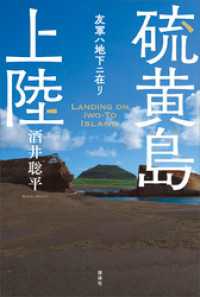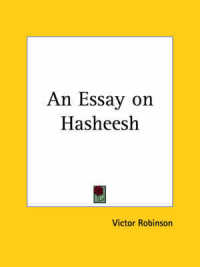- ホーム
- > 洋書
- > 英文書
- > Religion / Ethics
Full Description
Professor of theology Stephen Wellum considers Christ's singular uniqueness and significance biblically, historically, and today, in our pluralistic and postmodern age. Christ Alone is a much-needed study and defense of the doctrine that provides coherency to the Christian faith.
If the church is to proclaim the same Christ as the Reformers, we must understand and embrace solos Christus with the same clarity, conviction, urgency, and abundance of joy as the Reformers. To that end, Wellum:
Recovers the Reformers' basic insights by focusing first on two teachings: the exclusive identity of Christ and his sufficient work.
Follows the historical roots of the doctrine and its developments to show how the uniqueness of Christ has come under specific attack today.
Retraces the storyline of Scripture, from Christ's unique identity and work as prophet, priest, and king, to the application of his work to believers and our covenantal union with him.
Christ Alone seeks to recover a robust biblical and theological doctrine of Christ's person and work—and a renewed understanding that apart from Christ there is no salvation—in the face of today's challenges, unpacking why a fresh appraisal of the Reformation understanding of Christ alone is so important today.
—THE FIVE SOLAS—
Historians and theologians have long recognized that at the heart of the sixteenth-century Protestant Reformation were five declarations, often referred to as the "solas." These five statements summarize much of what the Reformation was about, and they distinguish Protestantism from other expressions of the Christian faith: that they place ultimate and final authority in the Scriptures, acknowledge the work of Christ alone as sufficient for redemption, recognize that salvation is by grace alone through faith alone, and seek to do all things for God's glory.
The Five Solas Series is more than a simple rehashing of these statements, but instead expounds upon the biblical reasoning behind them, leading to a more profound theological vision of our lives and callings as Christians and churches.
Contents
Each volume will be structured into three parts and will be approximately 70,000-80,000 words in length.
1. Sola______ in historical perspective.
Part 1 of each volume seeks to take the reader back to the sixteenth century, providing the reader with the historical background to the sola in focus.
2. Sola______ in biblical and theological perspective.
Part 2 moves from the historical to the biblical, seeking to defend the sola in focus both biblically and theologically.
3. Sola______ in light of contemporary challenges.
Part 3 addresses new challenges to the sola in focus. The purpose of this final section is not merely to answer contemporary challenges, but to show the relevancy of Reformation theology today.








